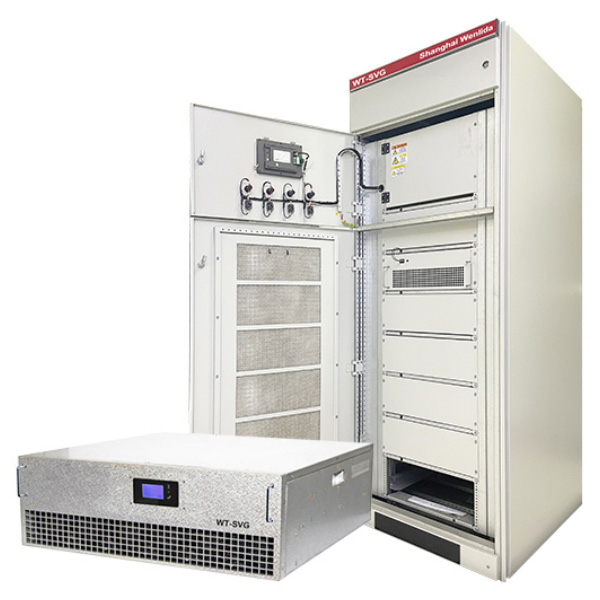Static Var Generator
Wt-svg, also known as static var generator (SVG) or static synchronous compensator (STATCOM), is a device that uses a self-commutating power electronic bridge converter to compensate for reactive power in an electrical power grid. It works by adjusting the amplitude and phase of the output voltage from the bridge circuit in real time or by directly controlling the current on the AC side of the bridge circuit. This allows the Wt-svg to absorb or emit reactive power as needed, helping to regulate voltage and improve power quality.
- Cooling method Smart air cooling
- Noise <70dB
- Working frequency50/60HZ +-5HZ
- Operating frequency21.6KHZ
Key features: Static Var Generator (SVG)
Key features and functions of a Static Var Generator include:- Voltage Regulation: SVGs can regulate the voltage of the power system by controlling the amount of reactive power they generate or absorb.
- Power Factor Correction: SVGs contribute to power factor correction by supplying or absorbing reactive power, helping to reduce losses in the power distribution system.
- Fast Response Time: SVGs can respond rapidly to changes in system conditions, making them suitable for applications where quick voltage and reactive power adjustments are required.
- Harmonic Filtering: SVGs often include harmonic filtering capabilities, helping to mitigate the impact of harmonic distortions in the power system.
- Modular Design: SVGs are typically designed with modular components, allowing scalability and flexibility in adapting to grid conditions.
- Voltage Flicker Mitigation: In addition to reactive power compensation, SVGs can a
Applications: Static Var Generator (SVG)
- Paper Mills and Textile Industries: Processes in paper mills and textile industries often involve large motors and other inductive loads. SVGs help improve power factors and maintain voltage stability in these settings.
- Isolated Power Systems: In remote or isolated power systems, SVGs can regulate voltage and enhance power quality. This is particularly important in microgrid applications where grid stability is critical.
- Electric Traction Systems: In electrified transportation systems, such as electric trains and trams, SVGs maintain stable voltage levels and efficiently support the traction system's operation.
- Oil and Gas Industry: Offshore platforms and onshore facilities in the oil and gas industry often face varying power demands. SVGs are used to control voltage and reactive power in these environments.
- HVAC Systems: In large commercial buildings, heating, ventilation, and air conditioning (HVAC) systems can benefit from SVGs to improve power factors and mitigate voltage fluctuations.
